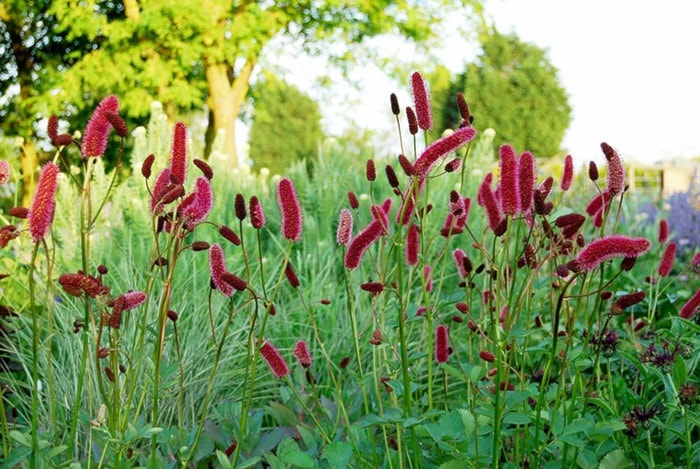One of the missing elements in many of today’s gardens is the “see through”’ effect, which simply means using plants that flower in a very open and loose form to accent other plants around them.
“See through” plants allow you to enjoy their beauty, while at the same time enable you to see the combined effect of their companions.
These so-called “see throughs” are often so light and wispy that the slightest breeze provides gentle movement, adding another delight to the garden.
A well-known garden photographer brought this to my attention at Longwood Gardens in Pennsylvania recently when he was specifically shooting through these plants to capture some pretty interesting effects.
Some of the most fascinating “see throughs” are the sanguisorbas. The bottle brush-like flowers on this varied plant family are quite delightful.
From tiny three-centimetre pink flowers to huge seven-centimetre rosy pink plumes, these are must-have garden plants. I’m surprised at how many folks have never seen or heard of them, but when they first spot them, it’s an instant love affair.
Growing from 48 to 72 centimetres and spreading to approximately 40 centimetres, sanquisorbas bloom, depending upon the variety, from June through July.
Their foliage is small and quite elegant, adding texture to both perennial beds and containers, and they will tolerate full, hot sun or partial shade.
 I like using them to centre blue perennial geraniums or short leucanthemums for a delightful combination effect.
I like using them to centre blue perennial geraniums or short leucanthemums for a delightful combination effect.
My favourite varieties are S. Tanna and Pink Tanna (Zone 4).
One plant that’s still a sleeper in many gardens is perovskias (Zone 5).
This silver-leafed jewel flowers from June through to frost, loves the hot sun and combines well with so many plants, especially ornamental grasses.
Perovskias Blue Spire has been the standard variety for years, even chosen as the Perennial Plant of the Year, but the introduction of P. Little Spire is a blessing. Growing only 50 centimetres high, it is both an accent and a focal point.
Its tiny blue flowers, accented by silver foliage, make it a standout with shorter evergreen grasses like the darker carex varieties and with all the pennisetums that start blooming in July.
It’s also a natural with rudbeckias, heleniums, phlox and late-blooming blue salvias.
It’s a superb plant that can create an instant effect even if planted now. Autumn mums would also benefit from this great companion.
Verbena bonariensis (Zone 7) has always been one of my favourite old-time tall “see throughs” (1.2–1.5 metres).
On Long Island, I spotted this verbena mass planted with ornamental grasses and what an effect.
We used to plant it along our streams in the gardens and it created that “wow” look. It’s most at home in perennial borders as a backdrop and with tall miscanthus grasses behind the combined “see through” result is delightful.
It’s also fun to use with tall white phlox, like David.
They are heat-and drought-tolerant and bloom continually till frost. Although not that hardy, they self seed for a return visit each year.
I consider English lavender a great lower “see through” plant. It’s a match made in heaven for low-growing pink roses, late-blooming pink dahlias and low-growing leucanthemum, like the award winning Snow Lady (Zone 5).
There is a strong resurgence in the use of lavenders, especially the hardy L. angustifolia Hidcote (Zone 5), which grows to 38 centimetres and its slightly shorter counterpart L. angustifolia Munstead, which grows to 32 centimetres.
There are so many possibilities when it come to “see through” plants, but it is usually the tall-growing varieties that have the true “see through” capabilities.
Late-blooming verbascums, tall veronicas and gypsophila are all great candidates.The tallest kid on the “see through” block is Thalictrum rochebrunianum.
Their tiny lavender-pink flowers with soft yellow stamens bloom in profusion from July through September.
Growing to two metres or more, they are used often in perennial borders to provide a unique “see through” quality that adds distance.
They also combine well with early-blooming miscanthus grasses. Thalictrums add a tall vertical element where it’s often missing, and they provide good stature to any perennial garden.
I hope you will not only try some of these plants, but also use them in ways that can highlight your containers and garden beds.
Brian Minter is a master gardener and owner of Minter Gardens in Chilliwack.
